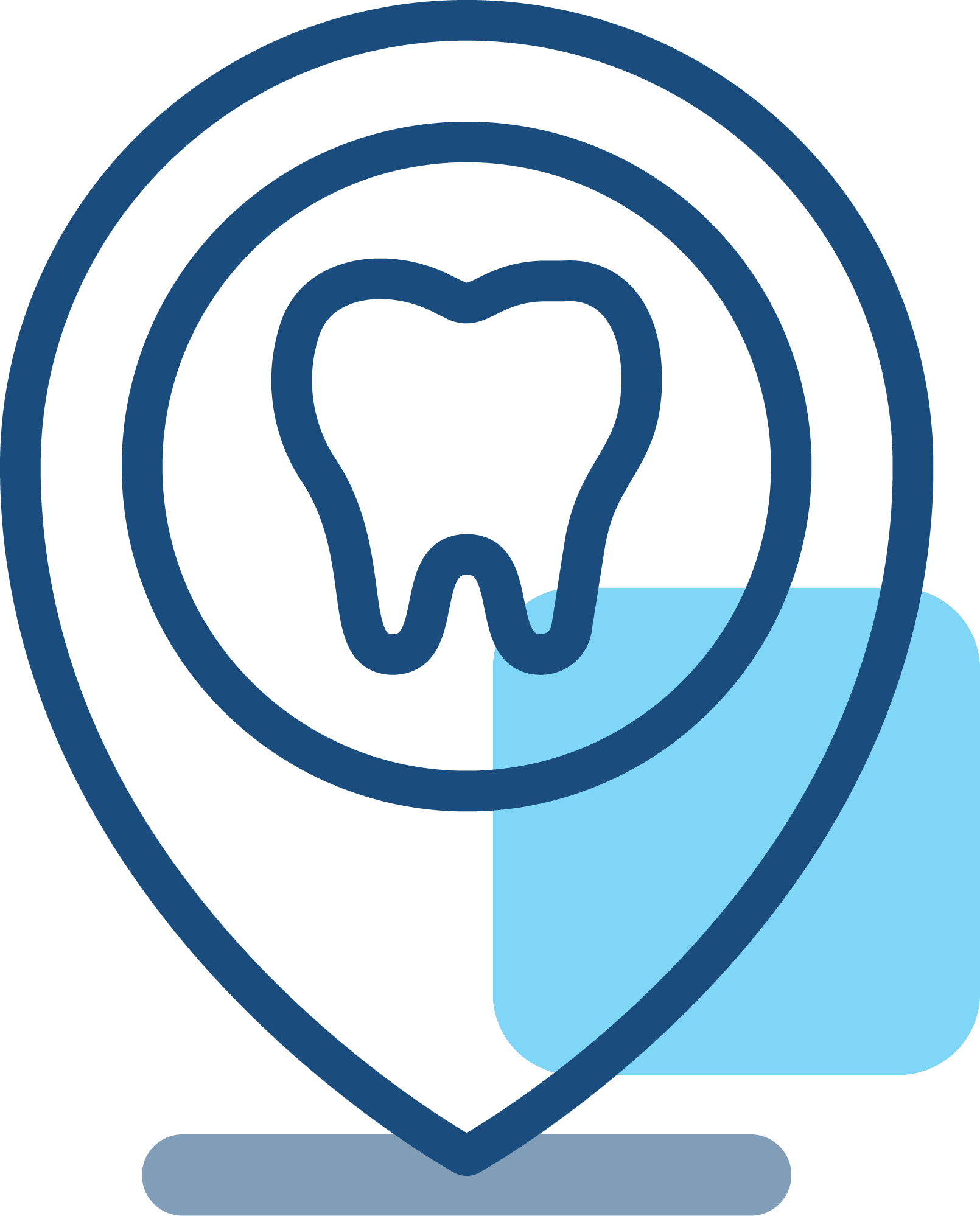Our guide to achieve and maintain great oral health
Welcome to our guide on oral hygiene! In this blog, we’ll share tips and insights for a healthy and beautiful smile. From choosing the right toothbrush to understanding the link between oral health and overall well-being, we’ve got you covered. Let’s dive in and explore the secrets to outstanding oral health.

The Essentials of Toothbrushing
Choosing the right toothbrush is paramount in maintaining good oral hygiene, and it starts early in life. From the moment a child’s first teeth emerge, the importance of proper dental care becomes evident. Whether you’re a parent seeking guidance for your child or an individual looking to optimize your own dental routine, we will provide you with the knowledge you need to make informed choices for a healthy smile.
Teeth should be brushed as soon as they appear. Parents should watch until the child is able to spit out excess toothpaste after brushing.
Baby teeth can start showing up as early as 6 months old, and they’re vulnerable to tooth decay from the get-go. As kids become more independent, let them brush their teeth, but make sure an adult supervises. Give them a small toothbrush with a soft bristle head.
Kids less than 3 should use a tiny bit of fluoridated toothpaste about the size of a grain of rice. Once children are older, they can use a pea-sized drop of fluoridated toothpaste. Kids should be assisted by, or supervised by, an adult and should be instructed to spit the extra toothpaste out after brushing.
Brush teeth for two minutes twice a day with a toothbrush that has soft bristles.
The American Dental Association suggests brushing your teeth twice a day for two minutes with fluoride toothpaste. Brushing for two minutes has been proven to remove a significant amount plaque and increase fluoride levels in the biofilm fluid and saliva, which leads to a reduced risk of cavities and better tooth remineralization.
Change your toothbrush every 3-4 months, or sooner if you notice the bristles looking worn or frayed. Both manual and electric toothbrushes work well.
There are different techniques for brushing your teeth, but the best approach is to angle your toothbrush at 45 degrees towards the gum line to clear away plaque from above and just below the gums. Use gentle back-and-forth strokes. For the back of your teeth, tilt the brush vertically and make up-and-down strokes.
To ensure cleanliness, follow these rules. When it comes to toothbrushes, it’s a simple rule – don’t share them. Make sure to clean your toothbrush thoroughly. After each use, place it upright to let it air dry.
To clean your toothbrush, try soaking it in 3 percent hydrogen peroxide or Listerine mouthwash to decrease bacteria. Microwaving or putting toothbrushes in the dishwasher is not recommended due to high heat. Toothbrush sanitizer devices are available. Look for a device that has been cleared by the U.S. Food and Drug Administration (FDA).
While medium bristles can effectively remove biofilm, it’s generally recommended to use a toothbrush with soft bristles because they reduce the risk of gingival abrasion AKA irritating your gums.
Both manual and powered toothbrushes are effective at removing plaque. While the powered toothbrushes can be more expensive than most manual toothbrushes, people who have dexterity problems—like the elderly, people with disabilities, or children—or those who have dental appliances, like braces, may find a powered toothbrush easier to use.

Selecting the Ideal Toothpaste
The ADA Seal of Acceptance is your assurance that a toothpaste isn’t just any ordinary paste. It signifies the presence of fluoride, a stalwart defender against tooth decay, actively bolstering tooth enamel to keep your teeth strong and resilient.
Fluoride isn’t the only key player in the world of oral health. Toothpaste comes packed with a variety of active ingredients, each with its own specific purpose. These ingredients work to tackle issues like tooth sensitivity, gingivitis, tartar buildup, enamel protection, and even teeth whitening.
Key players such as sodium monofluorophosphate, sodium fluoride, and stannous fluoride play a crucial role as anti-cavity agents, protecting against the formation of cavities. Additionally, they help combat dentin hypersensitivity, which can make your teeth sensitive to touch, temperature, and air.
Toothpaste also employs modified silica abrasives and enzymes, like calcium carbonate and hydrated aluminum oxides, to tackle surface stains and maintain those radiant smiles. Sodium lauryl sulfate and sodium N-lauryl sarcosinate step in as detergents, whipping up a frothy storm to help dissolve plaque and accretions during your daily brushing routine.
The flavor and sweetness in toothpaste come courtesy of non-caloric sweeteners, but don’t worry – cariogenic ingredients are strictly on the prohibited list. Humectants such as glycerol and sorbitol ensure your toothpaste retains moisture, while thickening agents like mineral colloids or synthetic cellulose keep the product stable and ready for action.
Lastly, peroxides like hydrogen and carbamide peroxides go the extra mile to lighten intrinsic stains, ensuring that your smile is not only healthy but also shining brightly. So, when you reach for an ADA-Accepted toothpaste, rest assured that it will get the job done.
Allergies may be caused by essential oils, including spearmint, peppermint and cinnamon. These are most common sources of perioral contact dermatitis, stomatitis, or cheilitis. Additional allergies can be caused by citric acid (often listed as zinc or potassium citrate)

Importance of Proper Flossing Techniques
Dental floss, dental tape, and interdental cleaners (like little brushes, special wooden or plastic picks, sticks, or water flossers) help you get rid of trapped food between your teeth and remove the bacteria that forms there before it has a chance to turn into plaque.
Plaque, can solidify into tartar, a tough mineral deposit on teeth that demands mechanical removal. At this stage, your usual brushing and flossing routine faces a challenge, with potential gum swelling and bleeding marking the onset of gingivitis – the early stage of gum disease.
Floss, once a product of silk fibers, has evolved into a low-risk, US FDA Class I device, now crafted from nylon or plastic filaments, offering various flavors. Whether it’s waxed or unwaxed, the effectiveness remains the same.
And don’t forget the alternatives: interdental brushes and trusty water picks join the fight against plaque and tartar.
The ADA advises twice-daily brushing and daily flossing (or other interdental cleaning). The order isn’t set in stone; it’s the frequency and consistency that count.
A critical note from the ADA – floss strands should only serve you once. Reusing them risks reduced effectiveness and potential bacteria deposition in your mouth. Dispose of them post-use.
The Importance of Regular Dental Check-ups
Not only do regular dental check ups allow you to get your teeth cleaned and get your gums healthy, but it gives your dentist the best chance of finding problems before they get bigger. Finding a cavity when it’s small may mean that a tooth needs a filling and not a full crown which is more expensive. It may mean gum disease is not severe, it is only mild.
Catching problems when they are small is better than when they are big. So doing the check ups will mean you are less likely to have big problems unexpectedly.
Your dentist recommends seeing you twice a year. This helps your dentist assist you in maintaining the best possible oral health.

Oral Hygiene and Nutrition
- A two-way relationship exists between oral health and diet and nutrition.
- Diet and nutrition affect the health of the tissues in the mouth, and the health of the mouth influences the nutrients consumed.
- The consumption of sugars has been associated with an increased risk of developing dental caries, or cavities.
- It is challenging to determine the relationship between gum disease and diet and nutrition, while frequent consumption of acidic foods and beverages is linked to an increased risk of erosive tooth wear.
Nutrition can influence the mouth’s health, and how cavities or gum disease progress. Vitamins and minerals are considered micronutrients, while carbohydrates, protein, and fat are macronutrients. Diet refers to the specific foods someone consumes.
Tooth decay is, in fact, the most common disease globally. The term ‘dental caries’ refers to both the disease process and the holes or initial, non-cavitated lesions that develop. This process is influenced by bacterial films, sugar, and various factors that affect the hard tissues of teeth.
Teeth can be demineralized or eroded by the acidic by-products produced by bacteria that cling to teeth and break down dietary carbohydrates. When the pH level falls below 5.5, it promotes the growth of even more acidic bacteria, exacerbating the issue. This is why consuming carbohydrates can have a significant impact on the development of cavities.
The type of carbohydrates that are easily fermented are worse for cavities. Free sugars are ones added to foods and beverages, and naturally occurring sugars are in juice and concentrates. Sugars are necessary factors for cavities to form. Sucrose is a disaccharide of glucose and fructose. It is the most cavity causing sugar. It is a substrate for the bacteria to make polysaccharides in plaque that sits on teeth. Plaque with sucrose has less calcium, inorganic phosphate, and fluoride, all needed to keep teeth strong and remineralize them.
Quick Facts:
- Lactose is more tooth-friendly compared to sucrose, fructose, or glucose because it doesn’t undergo acidic fermentation.
- Experts suggest it’s advisable to limit free sugar intake to less than 10% of your total energy intake.
- Early Childhood Caries (ECC), which leads to decayed, missing, or filled teeth in children under 6, is often associated with excessive juice consumption.
- Sugar’s pH-lowering effect takes 30 minutes, so consuming more within that window is preferable.
Poor nutrition increases cavity risk, but milk, dairy, apples, cranberries, tea, and high-fiber foods can combat cavities by neutralizing pH drops. Sugar-free gums with xylitol and sorbitol also help.
Calcium is a mineral in a lot of food, it forms bones and teeth, with hydroxyapatite. This is the primary calcium phosphate mineral in bones and enamel. Calcium is absorbed from the gut into the blood. Most comes from dairy, but some alternatives exist from plants. The alternatives are not recommended for kids.
An increased consumption of alcohol is often associated with a higher risk of developing oral cancer. This highlights the connection between diet and nutrition and your overall health. Canker sores, also known as Aphthous ulcers, are commonly seen in individuals with Recurrent Aphthous Stomatitis (RAS). These sores can be triggered by the consumption of hard, acidic, or salty foods. People who experience canker sores are also more likely to have a zinc deficiency.
Dry mouth can be caused by medical problems and made worse by acidic foods, caffeine, and alcohol.
Teeth Whitening and Stain Prevention
- Teeth whitening or bleaching can effectively address both external and internal stains.
- Teeth whitening only works on natural teeth; it doesn’t affect tooth-colored crowns or fillings.
- Teeth whitening can be done at a dental office or using prescription and over-the-counter products at home.
- Carbamide Peroxide and Hydrogen Peroxide are commonly used for teeth bleaching as they can easily penetrate the hard tooth structure.
- Common side effects include temporary tooth sensitivity and gum inflammation.
Teeth whitening or bleaching is a popular procedure, available both in dental offices and for at-home use. Discoloration refers to any alterations in the color or translucency of a tooth, whether it affects a single tooth, multiple teeth, or the entire set. These discolorations can be external, internal, or a combination of both.
External stains typically result from the buildup of colored substances on the enamel. These stains can be caused by environmental factors, smoking, exposure to iron or copper, or the consumption of dark fruits, wines, coffee, tea, or cola.
External stains vary widely in color and severity and are made worse by habits, bad hygiene or colored food. They can be reduced by brushing with a bleaching toothpaste or dental cleanings. Some over the counter options do well on external but not internal stains.
Internal stains develop within the tooth, affecting the enamel or the dentin. Dentin, which lies beneath the enamel, is still mineral but softer. These stains can be caused by various factors, including genetic conditions and rare disorders such as dentinogenesis imperfecta or fluorosis.
Aging can also be a cause of intrinsic discoloration. As you age, enamel becomes more translucent and thinner, allowing yellow dentin to show and the tooth may appear darker. Tetracycline staining, cavities, nerve necrosis, or even chlorhexidine mouth rinse can lead to discoloration.
Less internal staining requires a chemical reaction to change the color of the teeth. Common ingredients are carbamide peroxide and hydrogen peroxide, different percentages and concentrations are available.
Bleaching in chemical whitening is due mostly to carbamide peroxide, and also decomposes to hydrogen peroxide, a strong oxidizer. Hydrogen Peroxide diffuses easily through spaces in the enamel and down to the dentin. Bleaching occurs when reactive oxygen molecules interact with organic colored compounds in the enamel and dentin.
The effectiveness of teeth bleaching varies depending on the type of internal staining. Brown stains caused by fluorosis or tetracycline may show more improvement compared to white stains resulting from fluorosis or braces. Occasionally, multiple treatments may be necessary to achieve the desired level of whitening. Teeth bleaching is a common and popular option for those looking to enhance their smile and appearance. Prior to the procedure, a thorough examination of the teeth, X-rays, and consideration of any allergies are essential to determine if bleaching is the appropriate choice for an individual.
Teeth can change color, but crowns and fillings remain the same. Over-the-counter products typically contain peroxide at lower concentrations. Whitening toothpastes use abrasives to remove external stains and may also have a lower percentage of peroxide for lightening. Whitening strips are more effective than toothpaste. Gels used in custom-made trays for at-home application or in-office whitening with a light activation system are options. Power bleaching involves higher concentration hydrogen peroxide in water.
Peroxide concentration in at-home systems typically ranges from 10% to 38% carbamide peroxide and treatment times are dictated primarily by the concentration used.
Other dental offices use rubber-cup prophylaxis and enamel microabrasion, which may be completed before home use whitening. Microabrasion uses abrasive acidic gel to remove thin outer layers of enamel surface. Treatment is used for external stains not beyond the enamel, overall the internal stain removal is not possible with this technique.
Whitening non-vital teeth, such as those that have undergone root canals, can be achieved through internal or intracoronal bleaching. In some cases, this process may have a side effect of resorption, although it’s not considered a common occurrence.
Occasionally, fillings may need to be replaced, and this should be taken into account, especially when a tooth doesn’t respond to whitening. Over-the-counter products may take longer to achieve the same results, sometimes almost twice as long. Tooth sensitivity is more common with higher-percentage whitening agents, as it can lead to inflammation of the exposed pulp. However, tooth sensitivity is a potential risk associated with all tooth whitening procedures.
This can happen in up to 2/3 of people during early teeth whitening. But it usually goes away after 4 or 5 days. It is better not to get numb for whitening, that way any burning sensation can indicate gel leakage through barriers so that it can be fixed right away. Numbing would make someone unable to feel this burning and lead to a greater problem.
DIY techniques: coconut oil and oil pulling or charcoal are popularized, but they are not used by dentists. There is no scientific evidence to support that these methods work.

The Link Between Oral Health and Overall Well-being
- Periodontal disease or Gum Disease has been associated with heart disease and diabetes.
- Although many connections have been identified between gum disease and systemic conditions, establishing direct causation remains uncertain.
- Gum disease and systemic diseases share many common risk factors, including smoking and poor diet.
- Since the late 19th century, there has been a belief that oral bacteria can travel to other parts of the body. There are two proposed mechanisms for this. First, chronic inflammation in the mouth may lead to increased markers in the bloodstream, altering the immune response or contributing to the burden of disease. Second, the mouth can serve as a reservoir for pathogenic bacteria that can enter the bloodstream and affect distant sites or system pathology, leading to conditions like endotoxemia or bacteremia.
Numerous scientific articles have established links between gum disease and conditions such as diabetes, heart health, pregnancy outcomes, and pneumonia. Leading organizations and scientists place a significant emphasis on this connection. Gum disease is prevalent, affecting up to 50% of the population, and nearly half of Americans possess risk factors for heart disease, including diabetes, obesity, poor diet, alcoholism, or smoking. Many systemic conditions can impact oral health, either directly or due to physical limitations that hinder proper oral hygiene:
- Alzheimer’s disease and dementia
- Chronic kidney disease
- Diabetes
- Osteoarthritis
- Osteoporosis (including treatments)
- Radiation therapies (see Oncology Agents and Medications)
- Sjögren Disease and Xerostomia
- Sleep disorders (including Sleep Apnea)
- Hypophosphatasia and X-Linked Hypophosphatemia
- Human Immunodeficiency Virus
Gingivitis is very common among children, but gum disease is not.
Whether the gum disease symptoms are plaque-induced or systemic, early diagnosis and treatment is essential. Delaying treatment of periodontal disease in children to facilitate differential diagnosis may increase the risk of bone loss.
Many health problems require to resolve a patient’s oral health status prior to organ transplants, joint replacements, cardiac surgery, and other medical procedures.
Conclusion
In this comprehensive guide to oral hygiene, we’ve explored the crucial links between our oral health and overall well-being. From understanding the importance of teeth whitening to the connections between gum disease and systemic conditions, it’s evident that maintaining a healthy smile extends far beyond aesthetics. As we’ve discovered, gum disease is not just a dental concern; it has far-reaching implications for conditions like diabetes, heart health, and more. The prevalence of oral health issues underscores the importance of preventive care and regular dental check-ups. So, whether it’s teeth whitening or gum disease awareness, these insights equip us with the knowledge needed to nurture a radiant, healthy smile for a happier and more confident you.
Are you in need of a check-up? We’re accepting new patients!
Our dental practice, located in Wheaton, IL is committed to maintaining your oral health. Give us a call today at (630) 765 7557




